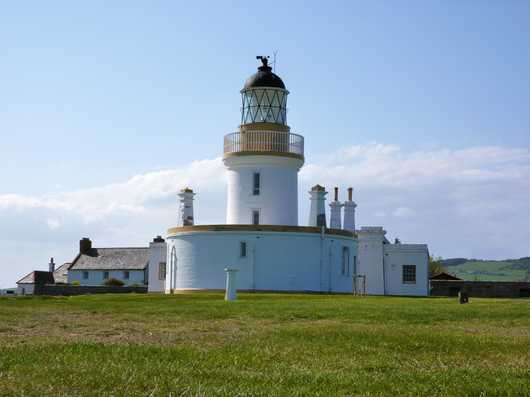Chanonry

Chanonry Point is spit on the Black Isle formed by glacial deposits at the end of the last ice age. It extends out into the Moray Firth, across the strait from Fort George, which is located on an unnamed spit of land near Ardersier. Between these two promontories are the Chanonry Narrows, a turbulent bottleneck that experiences strong currents and a high tidal range that can be up to 4 meters between high and low tides. Chanonry point is famous for its bottlenose dolphins, as the churning waters provide the ideal location to catch fish en-masse.
The lighthouse, which stands atop an area of raised land protected by a stone sea wall is one of the smaller lighthouses in Scotland, comprising just a short tower, with a semi-circular building wrapped around its seaward side, with a singular dwelling behind it. This light was designed to be kept by just one keeper. An almost direct copy of this lighthouse can be found only a few miles away in Cromarty.
One curious feature of this lighthouse, built to the design of Alan Stevenson in a version of his Egyptian Revival style, is that the back blanked-off half of the lantern room retains the original square astragals, complete with hand-grips, for exterior window cleaning, which were designed to resemble mythical sea serpents. The front portion of the lantern from which the light is ommitted is clearly of a later alteration, incorporating the later lantern design of diagonal astragels and flat panes of triangular glass, with plain inornate hand-grips. Quite why this change was made is not clear, however, the first lantern to use this newer style was installed at Noss Head in 1849.
The lighthouse was automated in 1984, at which time it was converted to electricity. The origial lens from the lighthouse was replaced by a modern ML-300 acrylic lamp, with a second of these lamps installed above it as a backup. The lens was clear, but the light exhibited was orange in colour. Circa 2013 a new 4-tier LED lamp was installed, which exhibits a bright cold-white light.
